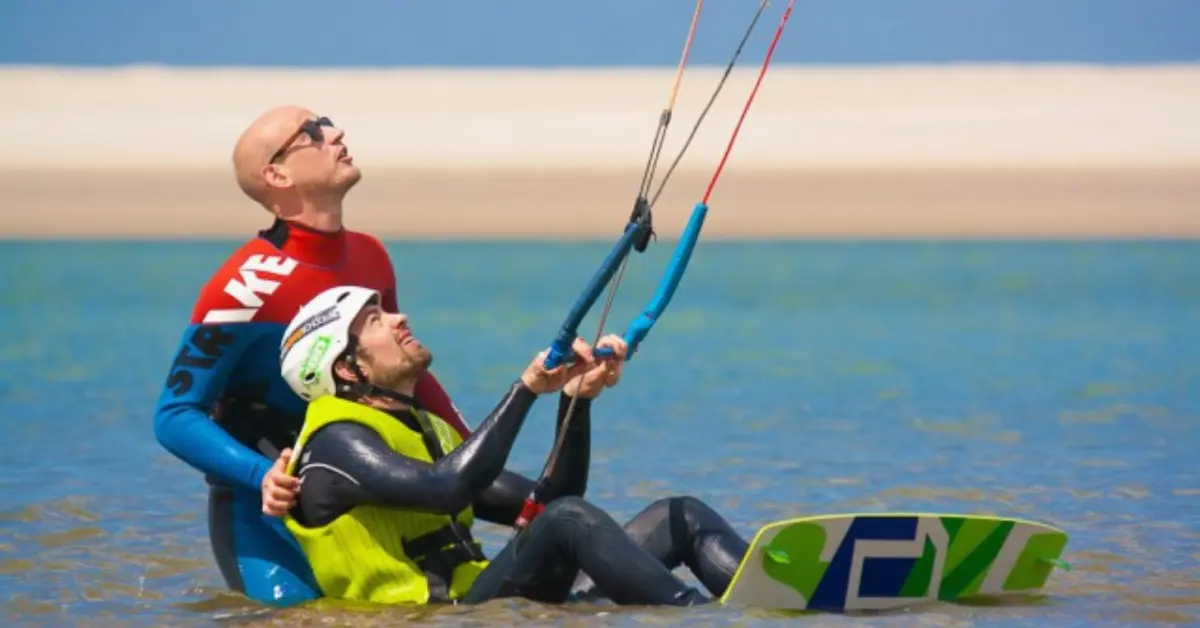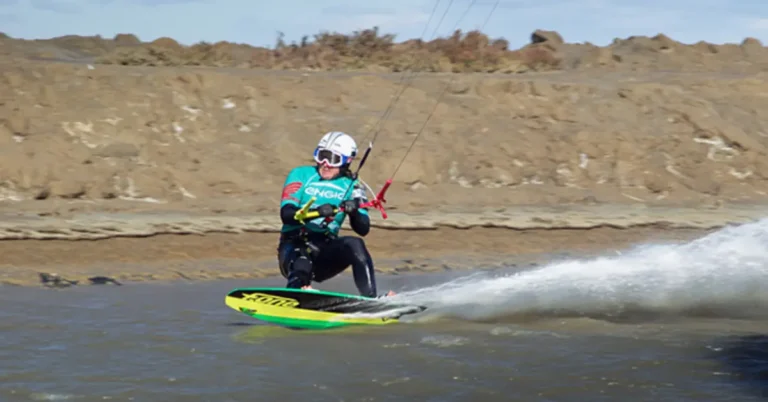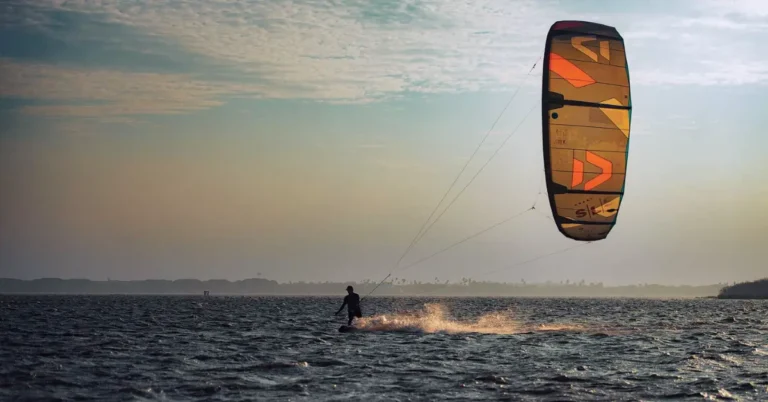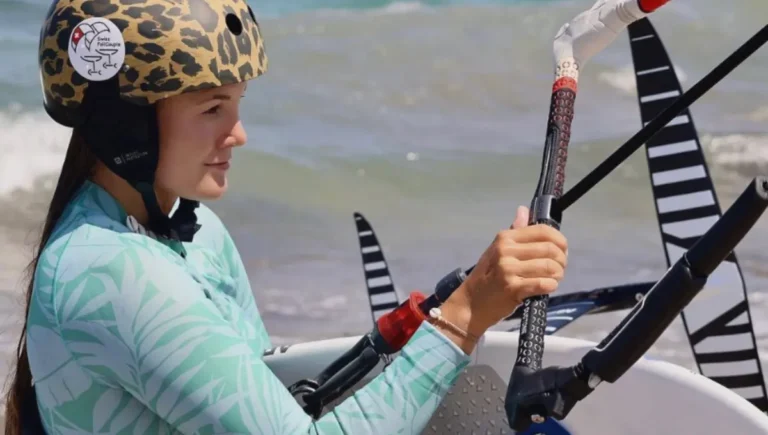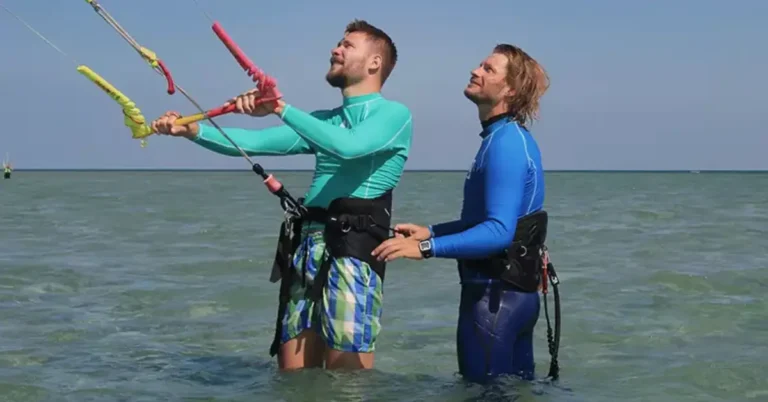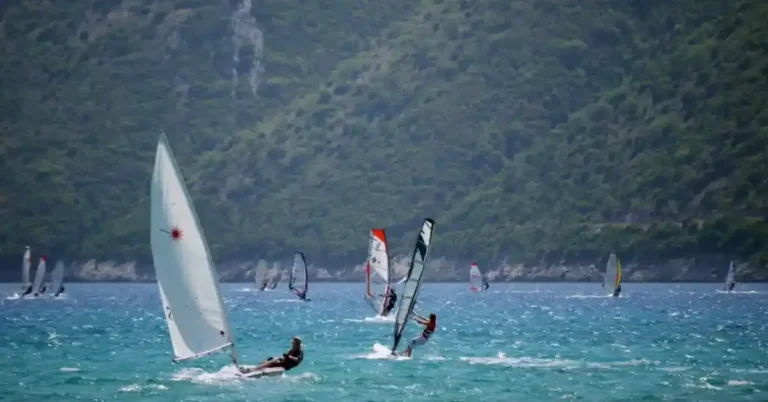How to Water Start Kitesurfing
Mastering the water start in kitesurfing is crucial for riders looking to glide effortlessly across the waves. This skill marks transitioning from controlling the kite and body dragging to the exhilarating experience of riding the board.
By understanding the key steps and techniques involved, you can confidently launch yourself from the water and start harnessing the power of the wind to propel yourself forward.
With practice and determination, the water start opens up a world of excitement and freedom on the water, setting the stage for countless thrilling kitesurfing adventures.
Also Read: Things to Look for When Buying a Kitesurfing Harness
Understanding the Water Start Process
Step 1: Positioning
Lie back in the water at noon with your board downwind and kite. Ensure there are no obstacles in your intended direction of travel before proceeding.
Step 2: Board Angle and Kite Movement
Angle your board approximately 45 degrees downwind, keeping the left tip slightly out of the water. Move your kite slightly backward, away from your intended direction of travel, typically to the 1 o’clock position.
Step 3: Initiating the Dive
Turn your kite toward your intended travel and dive it forward. The depth of the dive determines the power generated. Start with a gentle dive to avoid being overwhelmed initially.
Step 4: Lift-off
As the kite pulls you up, straighten your front leg and maintain a slight lean back to prevent being pulled forward. Hold onto the bar and allow the board to gather speed as you plane downwind.
Essential Tips for Success
Water Start: Your First Taste of Kitesurfing
Kitesurfing Water Starts Mistakes
When starting your kitesurfing journey, it’s easy to encounter some common mistakes that can hinder your progress. Let’s explore these mistakes and how to overcome them for a smoother experience on the water.
Mistake 1: Determining Wind Direction
Issue: It can be challenging for beginners to figure out the wind direction, but it’s crucial for safety and success.
Solution: Check flags or observe other kiters to gauge wind direction. Position yourself with your back to the wind for the best setup.
Mistake 2: Underinflating the Kite
Issue: Fully inflating the kite can lead to stability and difficulty relaunching.
Solution: Ensure the kite is correctly inflated before heading out to avoid unnecessary hassles on the water.
Mistake 3: Incorrect Kite Launch
Issue: Launching the kite incorrectly can cause problems, especially if you need clarification on the wind direction.
Solution: Position yourself perpendicular to the wind and double-check your setup before launching.
Mistake 4: Water Depth and Board Positioning during Water Start
Issue: Starting in shallow water or with the board improperly positioned can lead to difficulties getting up on the board.
Solution: Ensure you’re in deep enough water and place your board correctly before attempting a water start.
Can you kite surf if you can’t swim?
While it’s technically possible to kite surf without knowing how to swim, it’s highly discouraged and hazardous. Swimming skills are essential for kite surfing because you’ll inevitably end up in the water due to falling off the board or losing control of the kite. Without the ability to swim, you’ll be unable to navigate and stay afloat, putting yourself in danger of drowning.
Additionally, knowing how to swim enables you to handle unexpected situations and emergencies effectively. Therefore, it’s strongly recommended to learn how to swim proficiently before attempting kite surfing to ensure your safety and enjoyment of the sport.
Frequently Asked Questions
Conclusion
In conclusion, mastering the water start in kitesurfing is essential for becoming a proficient rider. By understanding the fundamental techniques and practicing regularly, you can confidently lift yourself out of the water and start riding the waves.
Remember to focus on kite control, proper positioning, and maintaining balance to ensure a successful water start every time. With patience, determination, and a commitment to safety, you’ll soon experience the exhilarating feeling of gliding across the water and harnessing the power of the wind to propel you forward in this exciting sport.
